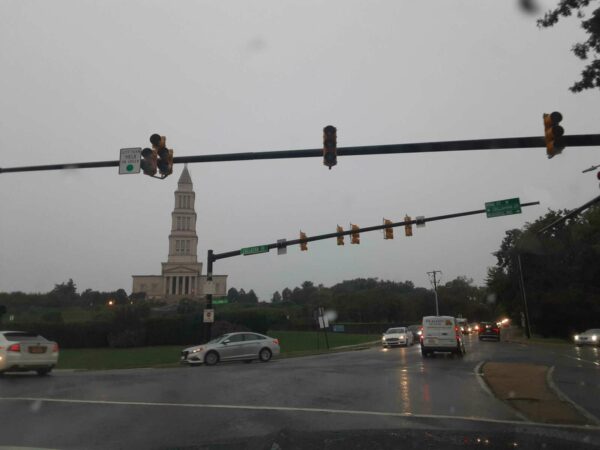
The overhaul of a busy intersection on King Street near the George Washington Masonic Memorial is scheduled to kick off next month.
The project will mean periodic lane closures at the King/Callahan/Russel intersection over the next few months, but when it’s over, there should be improvements to the roadway — particularly for pedestrians and cyclists.
The project has been in the plans since 2015. A report to the Traffic and Parking Board for the meeting next week said work at the intersection is starting next month and will wrap up in November.
According to the report:
Work is expected to begin in August and conclude in November. The work will be performed during non-peak hours to minimize traffic impacts. During these times, periodic lane closures may be needed, in which case flaggers will be present to direct traffic appropriately.
The highlights of the project are separate bike lanes on King STreet running through the intersection, which currently end just before the intersection. New pedestrian crossings will also be installed along King Street.
The project is funded by the Federal Transit Administration and the report said changes at the intersection include:
- A new pedestrian crossing of King Street on the west side of the intersection
- Safer, more direct pedestrian crossings across King Street and Callahan Drive
- Removal of the slip ramp to reduce vehicle turning speeds and improve safety
- Removal of the concrete median islands
- Converting the Masonic Temple service road from two-way to one-way southbound
- A leading pedestrian interval (LPI) for all crossings, a safety measure that provides a head-start for people using the crosswalk
- Upgraded sidewalks to provide more space, accessible ramps, and connection to the steps that lead to the Masonic Temple
- Bike lanes on King Street to help people biking safely position themselves and navigate the intersection
- New pedestrian signals where they are currently missing
- Signal timing improvements to minimize delay

